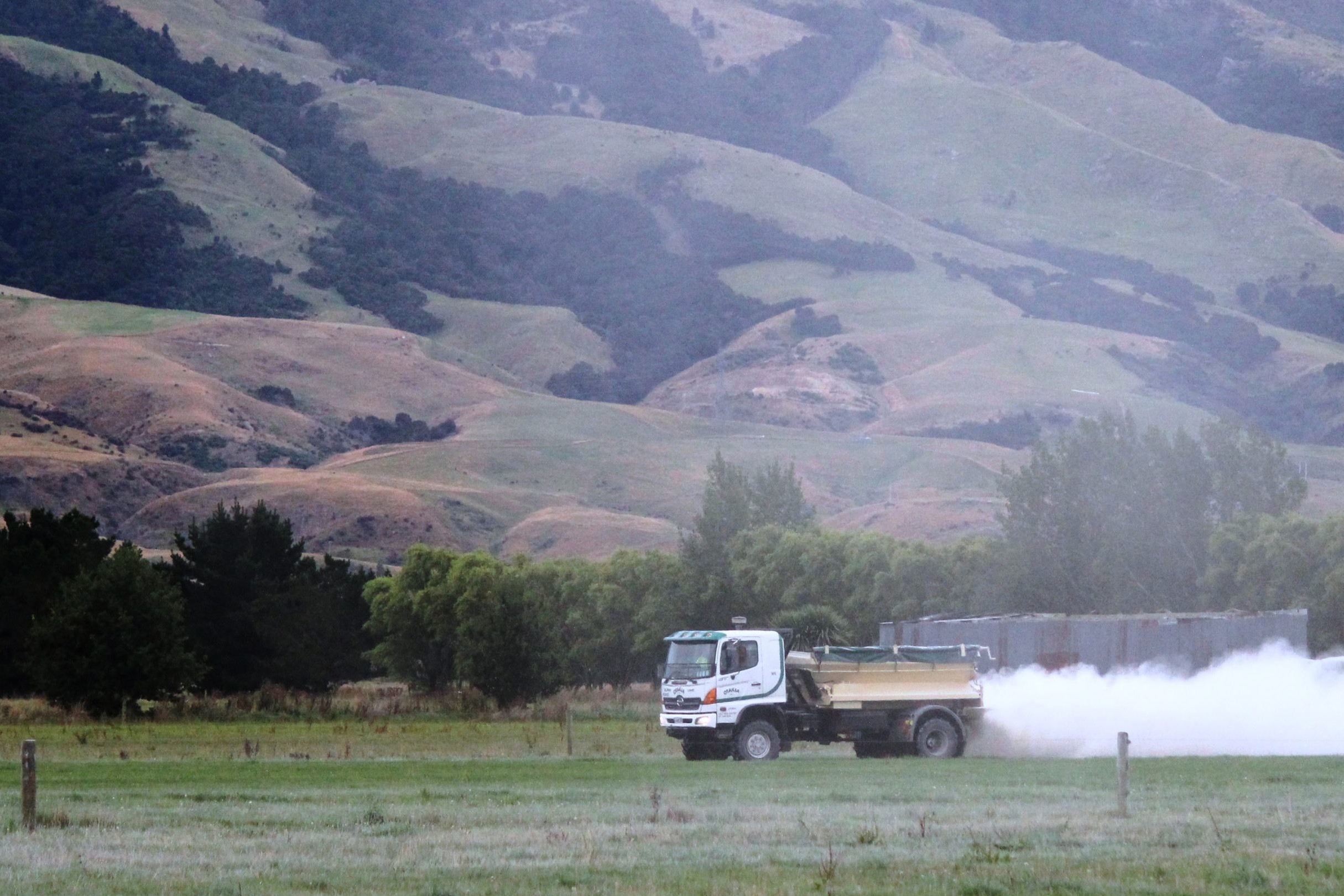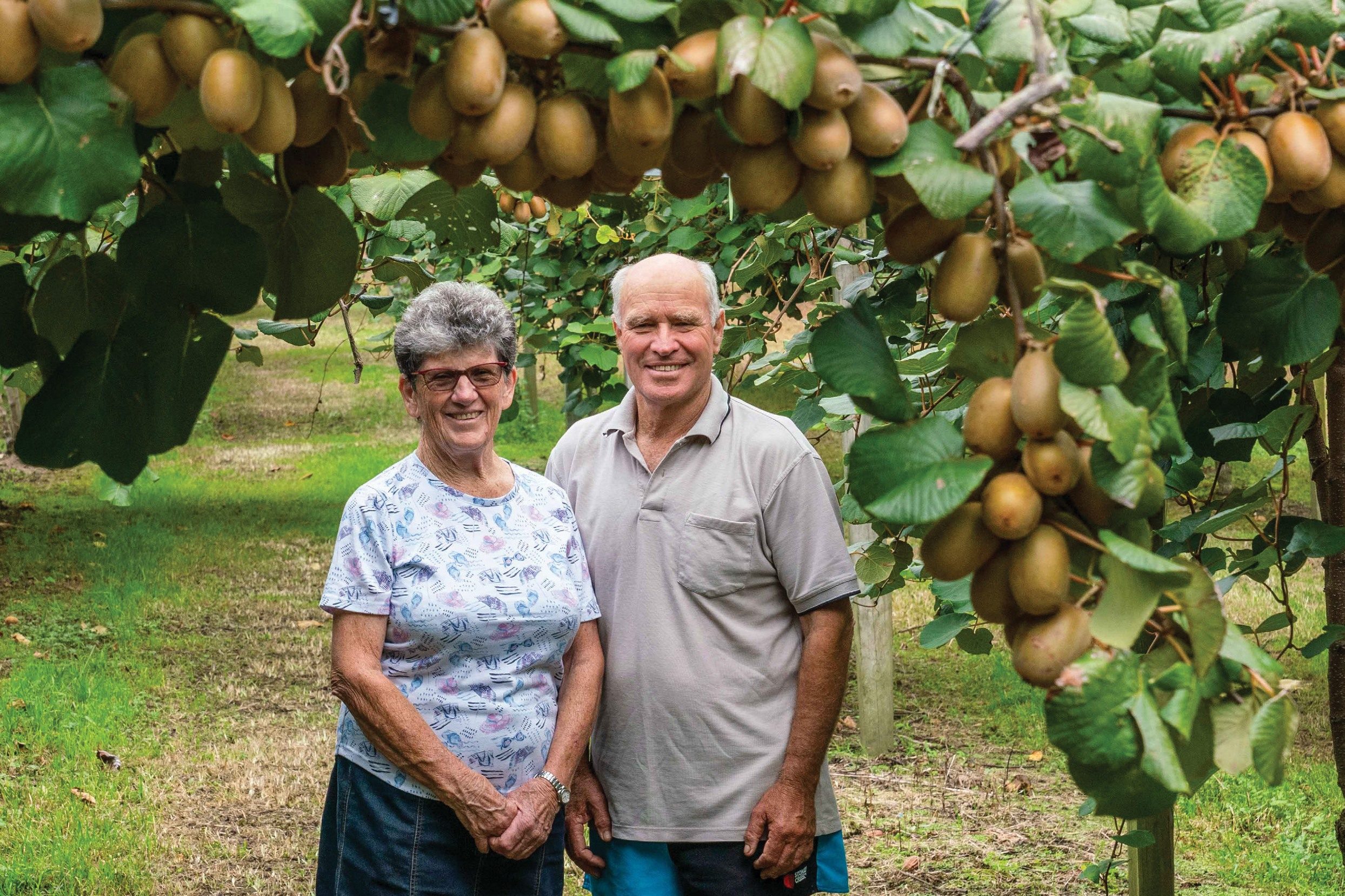Fifteen years of organic farming has taught Piopio dairy farmers Nick and Jo Collins lessons conventional farmers could follow to meet environmental regulations. Sheryl Haitana reports.
Nick and Jo Collins have been organic farming for almost 15 years and believe there are lessons all farmers can apply to help them with incoming environmental regulations.
“The conventional model has been working up until now, but with restrictions going forward I think it’s great to have alternatives and that doesn’t necessarily mean farming under certification.”
It’s a positive move for more farmers to focus on nutrient use and on the health of their soils, which could also be key in the carbon debate going forward, he says.
“There is research showing a healthy soil sequesters carbon in the soil. It can be done and as a nation I think there is huge potential to work toward the zero carbon bill and keep land in production, instead of ending up in pine trees which I believe is not the long-term solution.
The New Zealand dairy industry is being forced to focus on more than production which means focusing on other opportunities.
‘If the soil is bare you are losing carbon. We have a big focus on building carbon, and you have to have good plant cover to maintain the photosynthesis process. There is a synergy between the plant and soil microbes and getting that carbon cycle going.’
“There has always been a focus on yield, but we need to focus on adding value, looking after our soils, the environment and the perception of how we are viewed as an industry.”
Being organic, they can tick a lot of those boxes at once, he says.
Nick and Jo came to dairy farming out of the shearing industry. Nick, who grew up on a sheep and beef farm at Kaukapakapa, had a family history of farming in Piopio. The couple ended up going contract milking and sharemilking in the Waitomo district and bought their farm 15 years ago.
Six months after buying their farm they started the certification process to farm organically.
Farming organic was something the couple had always aspired toward. They were focused on adding value to their produce and producing healthy food along the way while looking after the environment, Nick says.
“We always had an affiliation with the environment, protecting the waterways, and the benefits of tree planting.
“We knew we had to tick more boxes than just profitability and we knew organics was the way forward.”
They had used homeopathy on their children, themselves and their stock for years and they knew that organic farming was a way to have healthier animals.
At the time they converted Fonterra was paying 7% extra on top of the milk price through the three-year certification process, which was the financial driver they needed.
With 25% equity in their first farm the bank manager wasn’t keen on their choice.
“Our bank manager asked how we would farm without synthetic nitrogen; he wasn’t keen at all, but we knew we could make it work.”
They’ve shown it can work and their equity is now closer to 60%.
The Piopio farm is rolling to steep at about 280 metres above sea level, with about 1800mm annual rainfall. It is usually about three weeks behind the Waikato in terms of grass growth, but their summers are generally kinder.
“These days you don’t know what to expect and we focus on pasture diversity and tree planting to build resilience for those drier summers.”
They harvest about nine tonnes drymatter (DM)/ha, which is more of a reflection of the class of country than the organic farming, Nick says.
“It’s imperative that we can grow as much high-nutrient feed as we can. We know there are limitations on this farm, but we try and maximise pasture harvested where we can.”
Nick and Jo got stuck into fencing off waterways and planting trees in their early years on the farm.
“We wanted the trees to provide as many benefits as possible, shelter and shade, provide habitat, fodder and nutrient mitigation, as well as nutrient transfer around the farm.”
They planted a lot of varieties, but their big wins have come from poplars, fodder willow and flaxes.
“They’ve provided so much nutrient transfer, the poplar and willow are really fantastic for fodder and the wind protection factor is tremendous year-round.
The underplanting of flax has worked well, except flax is difficult to manage around fence lines, he says.
In hindsight they would have planted more natives, but at the time they were cash poor and the flax/poplar/willow options were a cheap and easy plant source, he says.
There are lots of options farmers could use instead, from natives to fruit trees, he says.
The biggest challenge on their farm is managing the blackberry, but again that could have been managed better if they had done more strategic planting in the beginning.
Planting trees on farms is a source of shade and shelter for stock, but farmers need to consider where the best place is to plant trees for shelter.
For example, they don’t want cows to shelter under trees right next to a waterway, Nick says.
Farmers should also consider different levels of shelter when they are planting otherwise, they can create a wind tunnel.
“You don’t want the lollypop effect with all the protection up high. You need low-down protection for stock – as well as it gives them something to browse.”
There are lots of things to consider with tree management and the most important tool is a chainsaw to keep trees pruned.
The calves stay on the farm until May 1 and are fed a trailer load/day of poplar/willow fodder during dry summers.
The other big focus over the last 15 years has been on building pasture diversity over the farm.
Nick has used Wesco Seeds for 12 years and they mainly broadcast the seed on to paddocks in spring to fix any open pastures from winter damage. Nick uses three sacrifice areas during the winter to stand cows off. These areas need to have good shelter from prevailing winds, good soil type and contour for regrassing in spring, race access and buffer areas to avoid nutrient and soil runoff.
“It’s important to go in and correct those areas, we treat it as an opportunity to create diversity and correct soil compaction.
“We have a big focus on diverse species that we know do well here, such as chicory, plantain, red and white clovers, cocksfoot, grazing broom, lucerne and lotus on the sidlings.”
Nick also focuses on keeping a dense sward all year round which is more easily achieved through pasture diversity.
“If the soil is bare you are losing carbon. We have a big focus on building carbon, and you have to have good plant cover to maintain the photosynthesis process. There is a synergy between the plant and soil microbes and getting that carbon cycle going.”
Thus Nick is focused on keeping reasonable residuals post grazing to look after the soil, in winter that is usually 1200-1300kg DM, and summer around 2000kg DM.
The pasture diversity means it’s easier to manage residuals and longer rotations in summer, Nick says.
“We can get out to a 40-day round in summer, which is harder to achieve with ryegrass-dominant pastures.”
Nick and Jo have worked with Abron and AgriSea for 15 years for their fertiliser plan. Abron provides a solids blend, while he uses AgriSea Foliar and Soil Nutrition which is a liquid they apply themselves.
“We focused on lime in the early days and now are more focused on the trace minerals that are required and feeding the soil microbes.
“We do two applications a year spring and autumn of both the solid and liquid blends and a third application of liquid on our silage country in December.”
The spore count has come down from 300,000-400,000 when they bought the farm to averaging between 20,000-50,000.
Nick hasn’t’ seen any facial eczema on the farm for 12 years. They don’t use any facial eczema treatments, apart from the Agrisea Animal Health tonic they run through the dosatron. The poplars are also high in zinc and the chicory and plantain are high in minerals.
Their nitrogen leaching is 26kg N/ha and would be under 20kg N/ha if they weren’t buying in hay.
Nick is comfortable with where they are sitting, and he knows they still have room to move if need be.
“We are always looking at ways to improve where we can.
“Our nutrient management starts in the paddock not the riparian strip. The focus is holding on to the nutrients on the farm through soil biology, pasture diversity and pasture management which encourages deep root systems, the farm system will help support itself through the build-up of humus and carbon sequestration. This will provide increased availability of soil nutrients, water holding capacity in summer and improved soil porosity and drainage in winter.
“Diversity and biology go hand-in-hand. The more diversity in your pasture the more diversity in your soil microbes.
“But we are constantly monitoring it and doing the testing.”
Nick and Jo do soil and herbage testing as well as hair testing on their animals.
“We want to know what’s in the soil and what’s getting into the plants and the stock.”
There is still room for Nick and Jo to move, whether that’s changing their summer feed options, increasing pasture and fodder diversity and improved genetics.
They are breeding for A2 genes which will add more value to their milk.
Last year the couple left Fonterra to supply the Organic Milk Hub. Although there have been some speed bumps in the beginning, the long-term prospects of the co-operative are great, Nick says.
“We felt it was the best way to get fair value for our product.
“We can always do better, but we are comfortable that we have made quite a bit of ground over the last 15 years and that we’ve done it voluntarily before legislation.”
The NZ pastoral farming industry is in the box seat to lead the way in the production of high-value grass-fed, free-range, certified organic carbon zero product with a low environmental footprint and high animal welfare standards.
“Our climate is unique, we have the know-how, let’s produce the products the world is prepared to pay a premium for.”
Piece of the past
Nick and Jo have also diversified their business interests over the last 12 months restoring the local St Mary’s church in Piopio for use as accommodation for travellers and weddings.
Restoring the quaint church, says Jo, has been a very rewarding process for the community, for themselves and for others to enjoy.
FARM FACTS
- Owners: Nick and Jo Collins
- Location: Piopio
- Area: 156ha, 120ha milking platform
- Cows: 240 crossbreds
- Production: 80,000kg milksolids
- Farm dairy: 30-aside herringbone
- Pasture harvested: 9t DM/ha
- Supplement made onfarm: 400-500 bales grass silage
- Supplement purchased: 280 round bales hay
- Nitrogen leaching: 26kg N/ha
- Equity/debt: 60/40
- Farm working expenses: $4.50/kg MS
- Operating profit: $1.27/kg MS





